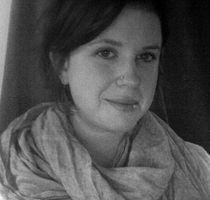Poetry Review
Love Figures
by Sam Cheuk
London, ON: Insomniac Press, 2011
106 pp. $14.95
Reading Sam Cheuk’s debut poetry collection, Love Figures, is like stepping into a film noir. Each poem is “an interrogation room†(63) with the speaker at once the detective “rummag[ing] through the memorabilia / for clues†(74) and the perpetrator confessing, perhaps falsely, to being the one with his “hand on the cleaver†(16). A chiaroscuro effect, as likely to be created by 9-11 memorial searchlights as by the shadows between a girl’s crossed legs, simultaneously conceals and spotlights meaning. Doppelgängers and multiple personalities abound. Two-way or compromised by hairline fractures, mirrors disorient and distort rather than reflect. Speakers connect to the others in their lives, most notably parents and lovers, with sincere ambivalence. Here, lying is always the quickest way to the truth.
The collection is divided into three parts, and although there is a great deal of overlap in terms of imagery, theme and tone, each section has its own distinct preoccupation and feel. The first part is primarily concerned with the bond between fathers and sons and how the narrative surrounding this relationship requires prevarication, exaggeration and mythmaking to survive. For example, in “Dramaturgy,†the speaker ‘supposes’ that a father and son perform a variety of actions that escalate in violence, until the speaker chillingly concludes, “This is me, your child, pallbearer of your name†(16). This direct address startles the reader into the position of the speaker’s father (a dead one at that) – one of the many dekes and twists that characterize this collection. While clearly fascinated by the parent-child relationship, Cheuk is still hesitant to decide how important it is. In “Four Part Elegy,†for instance, the slant rhyme between “liar†and “heir†is revelatory. Is lying an inherited trait or are inherited traits a lie?
The question becomes more complicated for Cheuk because, in a sense, his collection constructs its own parents. Cheuk’s literary progenitors are primarily fathers. His epigraphs from Barthes, Paul Auster, Bahuddin, and Zhuang Shu Wei and his references to Ondaatje and Shakespeare point to a deliberate genealogy of influence that takes into consideration both Cheuk’s cosmopolitan existence – he divides his time between Toronto, New York and Hong Kong – and his desire to situate himself as the latest generation in a long line of writers and intellectuals. This is contemporary poetry that pays homage to the past while being grounded in the present. It understands that the son will never be an exact copy, or mirror image, of the father.
The second section concerns the relationship between a lover and his beloved. Written as a series of poetic love letters to a single mother living in Louisiana, this section once again fools around with the lyric form by using the second person, placing the reader in the position of lover. Part two is more stylistically uniform than part one – which includes forms varying from modified tanka to prose and to drama – but similarly relentless in the scope of its skepticism. Indeed, at times the entire collection seems to pace anxiously, fretting about whether relationships to other people, especially parents and lovers, can be genuine or whether these relationships are necessarily compromised by lies, falsehood or deceit. How much do we really want to know other people and how much do we just want to see ourselves reflected in them?
In the concluding lines of the first section, the speaker evades this line of questioning when he says, “I want to push further, push myself / through my reflection / until there is nothing left to reflect and / I become the mirror, an eye centered between nothing / and the world†(57). Mirrors are present throughout the collection, a nod not only to a common trope in film noirs, but also to a prevalent symbol in the confessional mode of poetry, Plath’s “Mirror†and Sexton’s and “The Double Image†being two pertinent examples. Mirrors are attractive symbols because they connote so many contradictory ideas. At once promising transparency, self-knowledge and mimesis, mirrors are also deceptive and illusory, especially when paired with smoke, and are capable of thrusting us into parallel realities, à la Alice in wonderland.
Cheuk not only explicitly refers to mirrors, he also implicitly evokes them by playing games with reflecting lines. For example, on the title pages of the first two sections, the title is mirrored (i.e. “1. Punctum†in the upper left corner and “mutcnuP .1†in the lower right), while the third section defies this convention by reflecting “I am you.†with “.uoy era uoY†(89). Similarly, throughout the collection Cheuk uses slightly off repetitions and echoes. The effect is like playing the game where you look at two nearly identical pictures and try to find the differences. For instance, he concludes “Reconstructing Father†with the lines, “Say to yourself: my father’s name is Simon. / Say aloud: my father, his name is Simon.†(18). The speaker’s need to alter his internal thoughts before they enter the world body signals a compulsive need to bend the truth, no matter how minor the change. “Even now,†the speaker in “Epilogue†tells the reader, “…the simple truth refuses to surface.â€
In the third section, made up of a final love letter and two epilogues, Cheuk drops an inevitable (but no less satisfying for its inevitability) reference to Narcissus. Famous for falling in love with his own reflection, believing it to belong to a handsome youth, Narcissus is a clear argument against selfish love. Or is he? Tellingly, Cheuk eschews the common story of Narcissus in favour of a slightly different rendition:
In one version of the Narcissus
myth, the Beotian hero falls not in love
with his image, but her image within
his reflection. Narcissus was no fool,
he knew the face he saw. He would say
“I love you.†“Love me.†“Love you.â€
He knew it wasn’t her face either, rather
His mirroring hers. But who among us
could abandon a music mellifluous as
love’s abandon? (96)
This variation of the myth gives us a self-aware Narcissus, who instead of being duped by his reflection, actively accepts the knowledge that “…there is no selfless love.†(97). Cheuk relates this lesson about romantic love to the love between a parent and child when the speaker says, “I wanted fatherhood, something to disappear into†(97). The idea of fatherhood as a suspect, even selfish act echoes the final lines of Sexton’s “Double Image†in which the speaker, pondering why she desired a daughter, concludes, “I made you to find me.†When Cheuk’s speaker tells the reader, “We all love … / for our own reasons†(97), it is not a lament for a more genuine, authentic connection with each other, it is an honest appraisal.
If pressed, I could only find fault with one aspect of this collection: its use of literary critical jargon, such as “antisyzygy†(85). The occasional appearance of these words grates because for the most part the collection reads smoothly while at the same time advancing difficult and complex ideas. But this is a minor quibble in an otherwise stunning debut.
This playful, deeply philosophical collection plays good cop and bad cop with the reader. It shines light in our eyes, interrogates us endlessly and begs us to stare at ourselves in the mirror with the full knowledge that there are others staring back at us, just on the other side of our reflection.





No Comments so far ↓
There are no comments yet...Kick things off by filling out the form below.